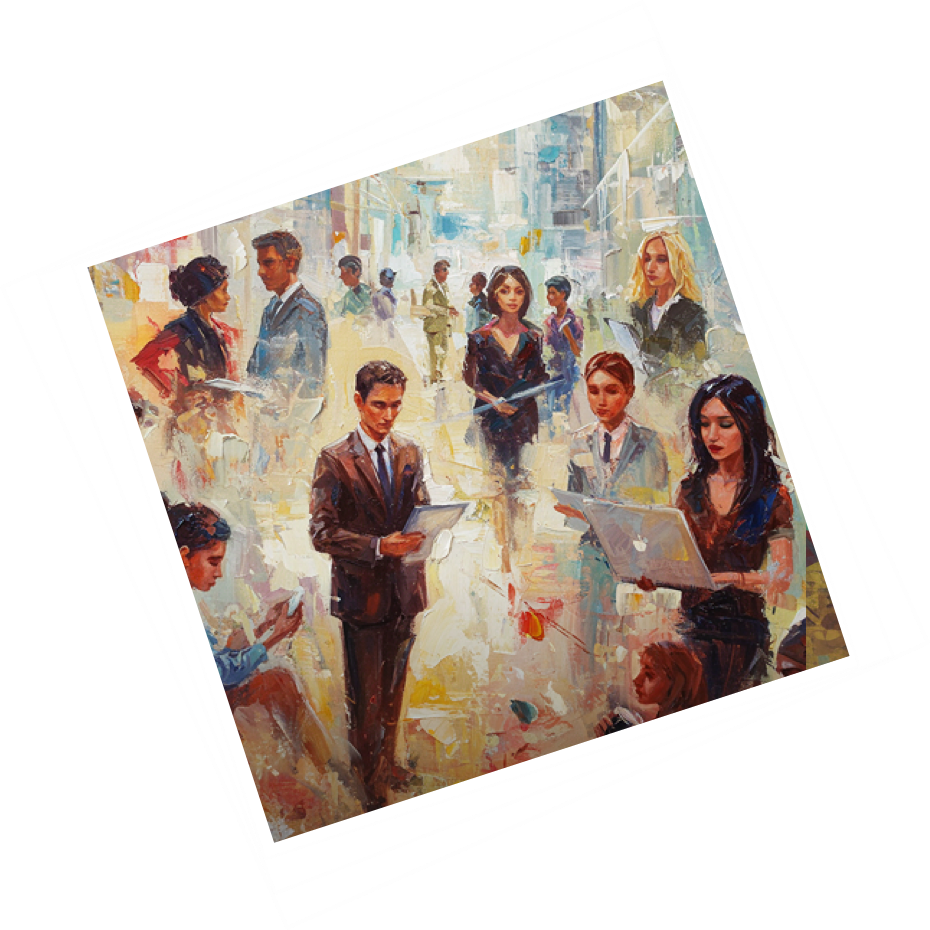Diversity Challenges and Benefits
Although scientific evidence suggests that a diverse and inclusive workforce performs better due to more perspectives and ideas coming to the table, we should not deny that there are some challenges involved in managing such a workforce.

Types of Workplace Diversity
We begin by exploring the two main types of diversity in the workplace, and the benefits and challenges of each.
Inherent Diversity
Inherent diversity is the more stable form of workplace diversity as it happens naturally over time or is present from the organization’s inception. But it remains easy for a diverse team to fall into bad habits that are difficult to address once they have been ingrained.
Acquired Diversity
Acquired diversity, on the other hand, refers to diversity that happened recently, usually due to a cultural shift within the organization. Adjusting to these differences and adopting an inclusive atmosphere can be difficult within established organizational cultures, but if implemented correctly, it can also be highly rewarding to an organization.

Top Challenges of Diversity
Recruiting Diverse Talent
In most cases, diversifying is a conscious decision that needs to be made and enforced by the hiring managers or recruitment service hired by the company. Diversity will not usually happen on its own.
Acquiring diversity can be accomplished through adopting several hiring practices. Hiring managers need to think about where applicants or potential employees are sourced. Diverse employees can usually not all be sourced from the same platform. Care needs to be taken in the writing of job descriptions and job offers, specifically in terms using neutral language. Anything suggestive of race or gender can mislead possible candidates. Lastly, hiring managers need to be mindful of unconscious biases in the selection and interview process. Any biases should be eliminated as far as possible.
Resistance To Change
Existing employees are generally resistant to change, and diversity initiatives can cause quite a bit of discomfort to an existing workforce. Such challenges can best be addressed through sound leadership practices. Employees must understand why diversity is important and what benefits they can expect from being part of a diverse workforce. A good way to achieve this is through diversity training. When employees understand what they might gain from a diverse workplace and are equipped to cope with the changes associated with the transition, it might be easier for them to accept the process.
Stereotypes, Bias, Discrimination, and Prejudice
Prejudice, discrimination, bias, and stereotyping is often a problem that is ingrained within diverse employees and hinders healthy communication and openness to change. It is important to address these issues as early as possible so that they may be overcome. Teaching people how to identify such things in themselves can often be the first step toward addressing the problem in a healthy and supportive manner.
Communication Issues
Furthermore, where there is much diversity there may also be many communication issues. Communication barriers can result from a lack of cultural sensitivity to simply having different languages in the office. Misunderstandings may also happen; providing a safe space for these misunderstandings to be addressed and resolved without negative fallout can be very helpful.
Even when bilingual employees are plentiful, the differences related to their first language can also result in misunderstandings. It is important that managers and leaders within an inclusive workplace not ignore miscommunications, as they can lead to many hard feelings if not addressed correctly. In many instances, a mentorship program can alleviate a lot of stress involved with language barriers and diverse backgrounds. Maintaining a more positive environment for everyone, including older generations, where people can be their authentic selves can work wonders for smooth integration and problem-solving.

Lack Of Consensus
Generally speaking, different perspectives can be a good thing in the work environment, and having employees from different countries means more perspectives. However, there are times when these different perspectives can lead to problems when consensus cannot be reached. The best way to combat this may be through small representative committees that can step in when consensus for a business goal cannot be reached.

Benefits of workplace diversity
While the challenges are plentiful, it should not necessarily serve as a deterrent for those who want to aim for diversity in the workforce. There are numerous benefits that can make the challenges worthwhile.
Improved Company Culture
In general, where diversity in the workplace is a norm for employees, the view of the company is usually positive. When considering that two-thirds of job seekers consider diversity an important factor in companies, it is easy to understand how the gender and even sexual orientation ratio within a company can affect the overall culture.
Diversity in a company, especially related to race and gender, creates a more secure environment for employees – a lack of diversity can result in hostility, and a high turnover is usually the consequence. This is especially true when minorities are represented in leadership roles because most employees have someone in management that they can trust or relate to. The workplace forms part of a community that an individual belongs to, and companies that are a positive part of an individual’s community will likely garner higher personal value from their employees.
Enhanced Productivity
As mentioned earlier, higher degrees of diversity often may result in more perspectives and broader ideas available to a workforce. This may enhance productivity simply because the daily work experience is less monotonous or predictable. Greater diversity may also enhance recruitment because the potential talent pool is much larger and more varied – diversity in a company also tends to make the team more attractive to potential hires. Where a leadership team is diverse, the staff tend to be more likely to share their thoughts and creativity with more confidence which also increases productivity.
Increased Innovation
Another benefit of diversity in leadership roles is that staff may be more comfortable sharing diverse ideas because their managers might be more open to their perspectives. They feel represented and heard, so they are more comfortable sharing their individuality with the team.

Solutions to Diversity Issues
Develop Organizational Policy
Sensible plans to increase diversity are often the first step to success, as are clear policies on diversity issues. Such documents and plans can help to ensure fairness and a sense of security. While a company is trying to increase diversity, clear hiring policies can help to keep the project on track and ensure that employees know what to expect.
Continuous Diversity Training
One effective way to manage diversity challenges is to ensure continuous training and support for leadership. The workplace should ideally always be a place of learning and development, and this should be encouraged and supported. Workplace evaluation should preferably not be punitive but should instead function as an integrated part of professional development where individuals are encouraged to develop through evaluation, providing them with a clearer path to improvement.
Emphasize Respect
It can be argued that respect is the foundation for a thriving work culture among employees and management. While policies and boundaries are important, modeling may be the most reliable and long-term way in which to inspire respect behaviors. Any policies that are in place on workplace diversity should ideally make everyone feel secure.











